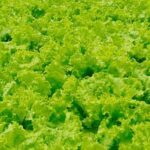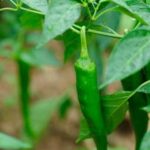Container vegetable gardening in North Texas offers a convenient and efficient way for residents to grow their own fresh produce, even in the face of the unique challenges posed by the region’s climate. From extreme temperatures to limited space, North Texans can benefit greatly from utilizing containers for their vegetable gardening needs.
This article will provide a comprehensive guide to container vegetable gardening in North Texas, including tips on choosing the right containers, selecting the ideal vegetables, soil and fertilization techniques, watering and maintenance strategies, sunlight optimization, seasonal considerations, and insights from experienced gardeners.
North Texas presents a variety of challenges and opportunities for vegetable gardening due to its climate. With the right knowledge and techniques, container gardening can be an effective solution for growing vegetables in this region.
In this section we will explore the benefits of container gardening for North Texas residents and provide an overview of the unique challenges and opportunities for vegetable gardening in this area. By understanding these factors, gardeners can make informed decisions to maximize their success with container vegetable gardening in North Texas.
Stay tuned as we delve into recommendations for choosing the right containers that are best suited for the North Texas climate along with tips on maximizing space and efficiency. We will also include a comprehensive guide to selecting the best vegetables that thrive in containers in North Texas, as well as advice for maintaining healthy soil over time. By following expert guidance on these topics, aspiring container gardeners in North Texas can ensure bountiful harvests while overcoming potential obstacles.
Choosing the Right Containers for North Texas
When it comes to container vegetable gardening in North Texas, choosing the right containers is crucial for the success of your garden. The hot and dry climate of North Texas presents unique challenges for growing vegetables, so selecting the appropriate containers can make a significant difference in the health and productivity of your plants.
In North Texas, it is essential to choose containers that are suitable for withstanding the extreme temperatures and varying weather conditions. One popular choice for containers in this region is terracotta pots, as they provide good insulation against heat and cold. Additionally, plastic or resin containers are durable and lightweight, making them easy to move around to optimize sunlight exposure.
The size of the container is also an important factor to consider. Larger containers can accommodate more soil, which helps regulate temperature and moisture levels more effectively than smaller ones. For example, tomatoes thrive in larger containers because they have a deep root system that requires ample space. However, smaller herbs like basil or parsley can do well in smaller pots if provided with proper care.
Ultimately, maximizing space and efficiency is vital when choosing containers for vegetable gardening in North Texas. Look for options that can hold an adequate amount of soil while fitting within your available space. Hanging baskets or vertical planters are excellent choices for small spaces, allowing you to make the most of limited areas such as balconies or patios.
| Container Material | Recommended Size |
|---|---|
| Terracotta pots | Varies depending on plant type; typically larger sizes for vegetables like tomatoes |
| Plastic or resin containers | Durable and lightweight; varies depending on plant type |
| Hanging baskets or vertical planters | Ideal for small spaces; varies depending on plant type |
Selecting the Ideal Vegetables for Container Gardening in North Texas
When it comes to container vegetable gardening in North Texas, selecting the right vegetables is crucial for a successful and bountiful harvest. Here are some recommended vegetables that thrive in containers within the unique climate of North Texas:
- Tomatoes: Varieties such as Patio, Bush Early Girl, and Tiny Tim are ideal for container gardening in North Texas. These varieties produce delicious tomatoes and are well suited to the warm climate of the region.
- Peppers: Bell peppers, jalapenos, and banana peppers are excellent choices for container gardening. They require ample sunlight and warm temperatures, making them perfect for North Texas.
- Herbs: Herbs like basil, cilantro, rosemary, and thyme do exceptionally well in containers. They not only add flavor to your dishes but also thrive in the hot and dry conditions of North Texas.
- Squash and Zucchini: Compact bush varieties of squash and zucchini are well suited for container gardening. Look for varieties like Eight Ball or Black Beauty which produce an abundance of fruit without taking up too much space.
- Green Beans: Dwarf or bush varieties of green beans are a great choice for North Texas container gardening. They are easy to grow in containers and offer a continuous harvest throughout the season.
In addition to these recommended vegetables, it’s important to consider the space constraints of container gardening. Carrots, radishes, lettuce, and spinach can also be grown in containers with proper care. When choosing vegetables for container gardening in North Texas, select varieties that have been bred specifically for compact growth or patio containers.
Remember that while it’s important to choose vegetables that thrive in the region’s climate, providing proper care such as regular watering, appropriate fertilization, and protection from extreme temperatures will also contribute to a successful container vegetable garden in North Texas.
Ultimately, selecting the ideal vegetables for your container garden will depend on your personal preferences and what you enjoy eating. With the right choices and care regimen, you can successfully grow a wide variety of delicious vegetables even in limited spaces through container vegetable gardening north texas.
Soil and Fertilization for North Texas Container Gardening
Container vegetable gardening in North Texas presents unique challenges when it comes to soil and fertilization. The hot and dry climate of this region requires careful consideration of the type of soil and fertilizers used to ensure the success of your container garden. When it comes to soil, choosing the right mix is crucial for providing proper nutrients and moisture retention for your vegetables.
For container vegetable gardening in North Texas, it is recommended to use a well-draining potting mix that is specifically formulated for vegetables. This type of mix will ensure that excess water can easily drain away, preventing the roots from becoming waterlogged. Additionally, incorporating organic matter into the soil can help improve its structure and fertility, which is especially important for container gardening.
In terms of fertilization, it’s essential to provide your container vegetables with the necessary nutrients for healthy growth and abundant harvests. Consider using slow-release organic fertilizers that are suitable for vegetable plants. These types of fertilizers release nutrients gradually over time, providing a steady supply to your plants without the risk of over-fertilization.
When it comes to maintaining healthy soil in North Texas container gardening, regular monitoring of nutrient levels and pH balance is crucial. Testing your soil periodically can help you make informed decisions about adjusting fertilizer applications to meet the specific needs of your vegetable plants. By paying close attention to soil health and providing appropriate fertilization, you can set your container garden up for success in North Texas.
| Aspect | Description |
|---|---|
| Potting Mix | Use well-draining potting mix formulated for vegetables. |
| Organic Matter | Incorporate organic matter into the soil for improved structure and fertility. |
| Fertilizers | Use slow-release organic fertilizers suitable for vegetable plants. |
Watering and Maintenance in North Texas Container Gardening
Watering and maintaining container vegetable gardens in North Texas can be a challenge due to the region’s hot and dry climate. However, with the right strategies and techniques, it is possible to overcome these challenges and grow a successful container garden.
Strategies for Watering
In North Texas, it is essential to establish a consistent watering routine for container vegetable gardening. The intense heat and low humidity levels can quickly dry out the soil in containers, leading to stressed plants. One effective strategy is to water the containers deeply in the early morning or late afternoon to minimize water loss through evaporation. Additionally, using a drip irrigation system or self-watering containers can help maintain consistent moisture levels in the soil.
Maintaining Container Gardens
Regular maintenance is crucial for the health of container vegetables in North Texas. This includes monitoring for pests and diseases that thrive in warm, dry climates. Implementing natural pest control methods such as introducing beneficial insects or using organic insecticidal soap can help prevent infestations. Furthermore, regularly checking for signs of nutrient deficiencies and replenishing the soil with organic fertilizers will ensure that the vegetables have access to essential nutrients for healthy growth.
Dealing With Challenges
Container vegetable gardening in North Texas requires proactive measures to mitigate potential challenges related to weather conditions and environmental stressors. Providing adequate shade during the hottest part of the day can prevent sunburn on delicate vegetable leaves, while using mulch on the soil surface helps retain moisture and regulate soil temperature.
Additionally, placing containers strategically to maximize airflow and minimize wind damage is vital for maintaining healthy plants in this region. By implementing these strategies, individuals can effectively water and maintain their container vegetable gardens in North Texas and enjoy a bountiful harvest throughout the growing season.
By following these watering and maintenance strategies tailored specifically for container vegetable gardening in North Texas, individuals can overcome the challenges posed by the unique climate of this region and cultivate thriving crops throughout the year.
Positioning and Sunlight for Container Vegetable Gardening in North Texas
Optimizing Sunlight Exposure
In North Texas, sunlight is essential for the growth and development of vegetables in containers. When positioning your vegetable containers, it’s crucial to choose a location that receives at least 6-8 hours of direct sunlight each day. This means that you may need to regularly reposition your containers throughout the day to ensure they receive adequate sunlight. Additionally, be mindful of any nearby structures or trees that may cast shadows on your containers and adjust accordingly.
Minimizing Effects of Extreme Temperatures
North Texas is known for its extreme temperatures, with scorching hot summers and occasional cold snaps in the winter. When positioning your vegetable containers, consider placing them in areas that offer some protection from these temperature extremes.
For example, placing containers near a wall or building can help provide some insulation from the heat during the peak of summer. In the winter, consider moving containers to a more sheltered spot or using insulating materials to protect the roots from freezing temperatures.
Utilizing Shading Techniques
In addition to optimizing sunlight exposure, it’s important to employ shading techniques to prevent vegetables from burning or wilting under intense sun exposure. This can be achieved by using shade cloth or strategically placing taller plants or structures to provide natural shade for your vegetable containers. By carefully managing sunlight exposure and implementing shading techniques, you can create an optimal growing environment for your container vegetable gardening in North Texas.
Seasonal Considerations for North Texas Container Vegetable Gardening
Container vegetable gardening in North Texas requires careful consideration of the unique weather patterns and temperature fluctuations that characterize the region. By strategically planning your plantings and being mindful of seasonal changes, you can maximize the success of your container garden year-round.
To help you navigate the seasonal considerations for container vegetable gardening in North Texas, here are some helpful tips and guidelines:
- Spring: In North Texas, spring is a great time to plant warm-season vegetables such as tomatoes, peppers, and cucumbers. Be sure to start your seeds indoors or purchase transplants from a local nursery to give your container garden a head start.
- Summer: The intense heat of North Texas summers can be challenging for container gardening. Consider planting heat-tolerant varieties like okra, eggplant, and sweet potatoes. Be diligent about watering and providing shade during the hottest part of the day.
- Fall: Fall is an ideal time to plant cool-season vegetables in North Texas, such as lettuce, spinach, and kale. Take advantage of the milder temperatures to refresh your container garden with a new crop of vegetables.
As you plan your seasonal plantings for your container vegetable garden in North Texas, keep in mind that the extreme temperatures and occasional frost spells can impact your crops. It’s essential to monitor weather forecasts closely and be prepared to protect your plants if necessary.
By aligning your planting schedule with the unique seasons of North Texas, you can optimize your container vegetable garden for success throughout the year. Whether you’re enjoying fresh summer tomatoes or crisp fall greens, adapting to the changing seasons is key to thriving in this region.
Success Stories and Expert Tips From North Texas Container Gardeners
In conclusion, container vegetable gardening in North Texas offers numerous benefits and opportunities for residents to grow their own fresh produce in a challenging climate. By choosing the right containers, selecting the ideal vegetables, and implementing proper soil, fertilization, watering, and positioning techniques, container gardeners can overcome the unique challenges of North Texas and achieve successful harvests.
When it comes to choosing containers for vegetable gardening in North Texas, it’s important to select materials and sizes that can withstand the region’s extreme temperatures and maximize space efficiency. Additionally, careful consideration of sunlight exposure and positioning can help mitigate the effects of the harsh climate on container vegetables.
Furthermore, by following advice from experienced container gardeners and learning from success stories in the region, North Texas residents can gain valuable insights into overcoming challenges and achieving abundant harvests in their own container vegetable gardens. With proper care and attention to the specific needs of this climate, container gardening in North Texas can be a rewarding and fruitful experience for all.
Frequently Asked Questions
What Vegetables Can You Grow in Pots in Texas?
In Texas, you can grow a variety of vegetables in pots, including tomatoes, peppers, eggplant, and herbs like basil, parsley, and cilantro. These container-friendly veggies thrive in the Texas climate and are perfect for small-space gardening.
What Is the Best Vegetable to Grow in a Container?
The best vegetable to grow in a container ultimately depends on your personal preferences and the specific conditions of your garden. However, many gardeners find that cherry tomatoes are a great choice for container gardening due to their compact size and abundant fruit production. Other good options include peppers, lettuce, and bush beans.
What Vegetables Are Easy to Grow in North Texas?
North Texas offers a favorable climate for growing vegetables such as tomatoes, peppers, squash, cucumbers, and okra. These veggies are relatively easy to grow in this region and can thrive in the warm temperatures and well-drained soil found in North Texas. Additionally, herbs like rosemary and thyme also do well in this area’s climate.

If you’re looking to get into vegetable gardening, or are just looking for some tips on how to make your current garden better, then you’ve come to the right place! My name is Ethel and I have been gardening for years. In this blog, I’m going to share with you some of my best tips on how to create a successful vegetable garden.





